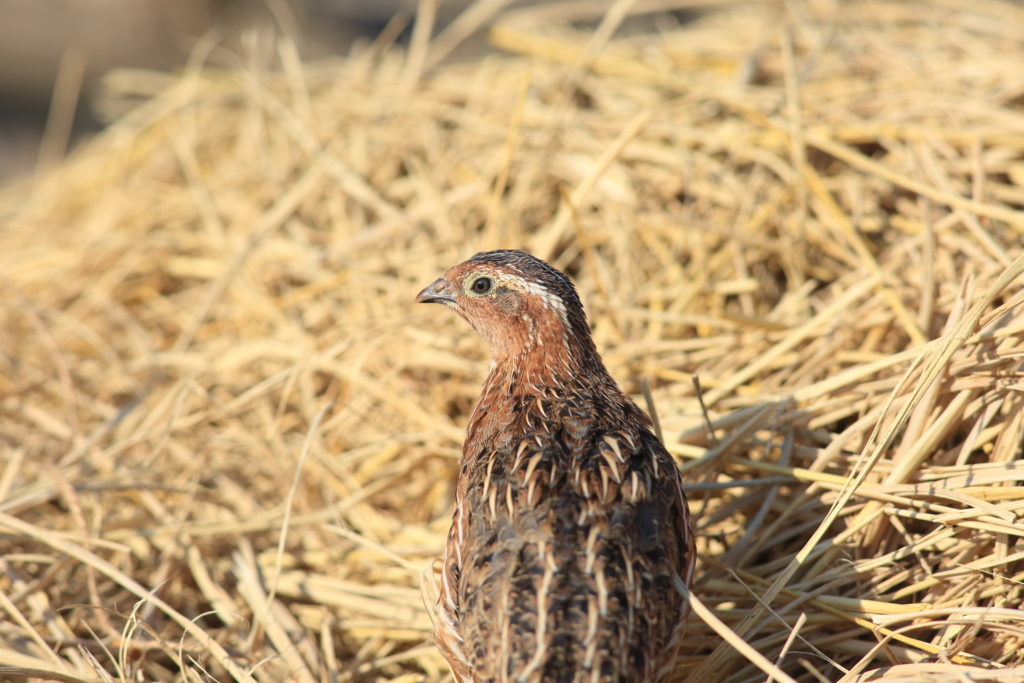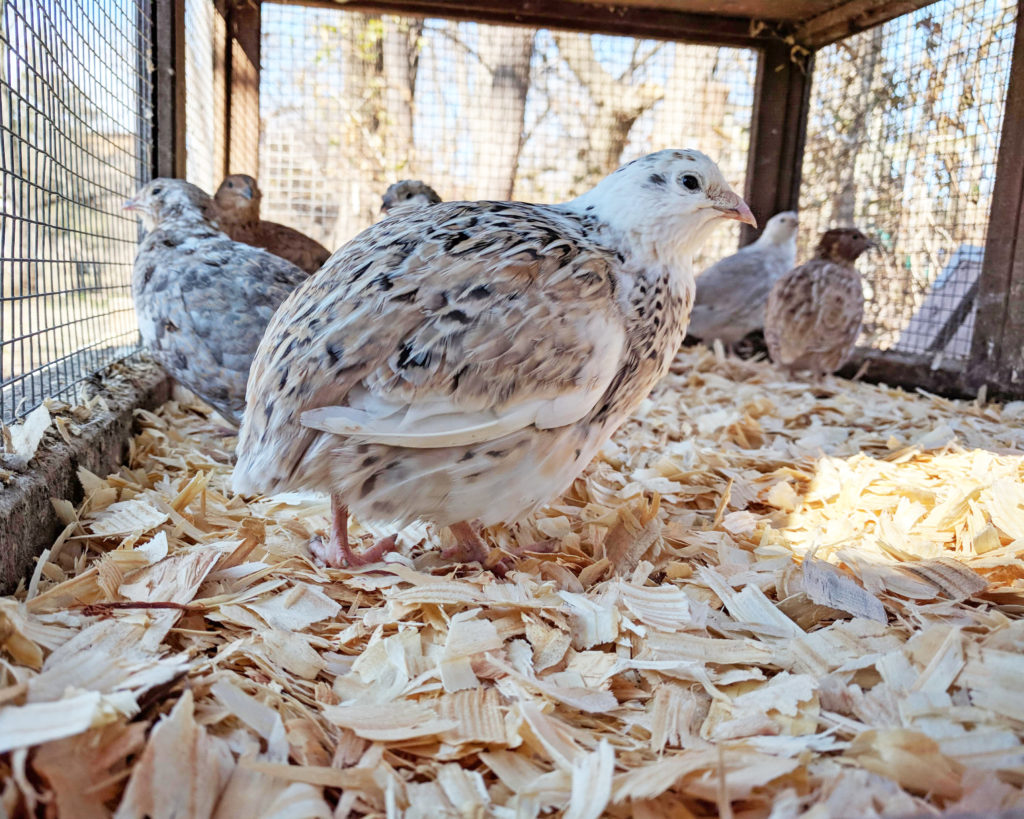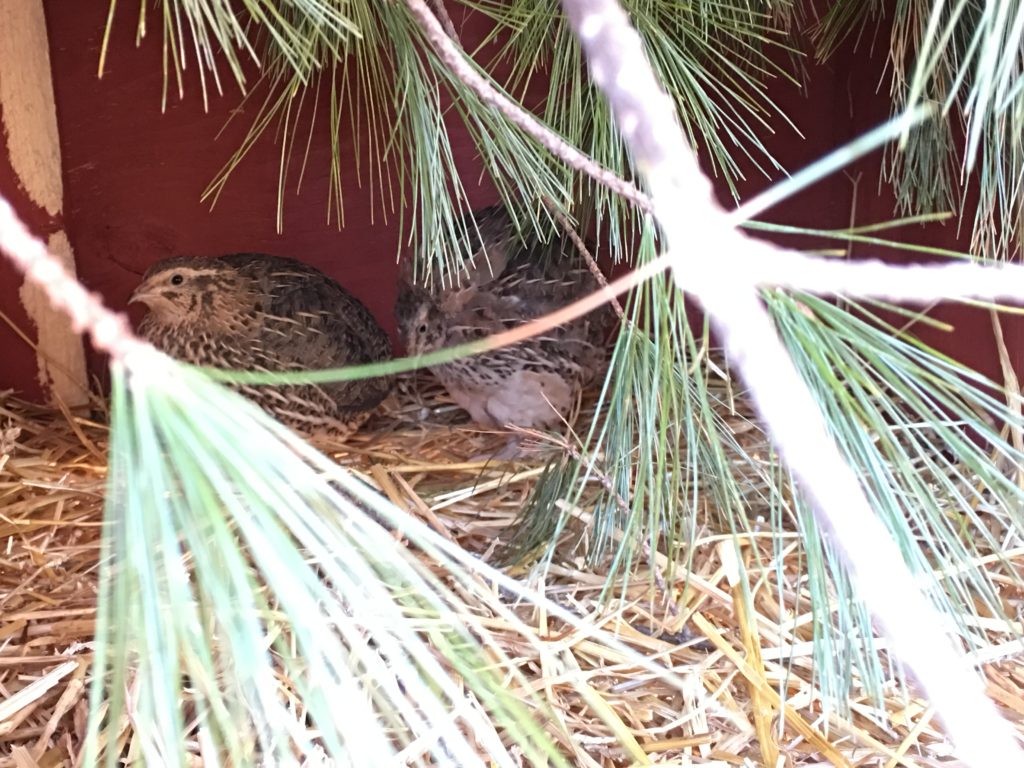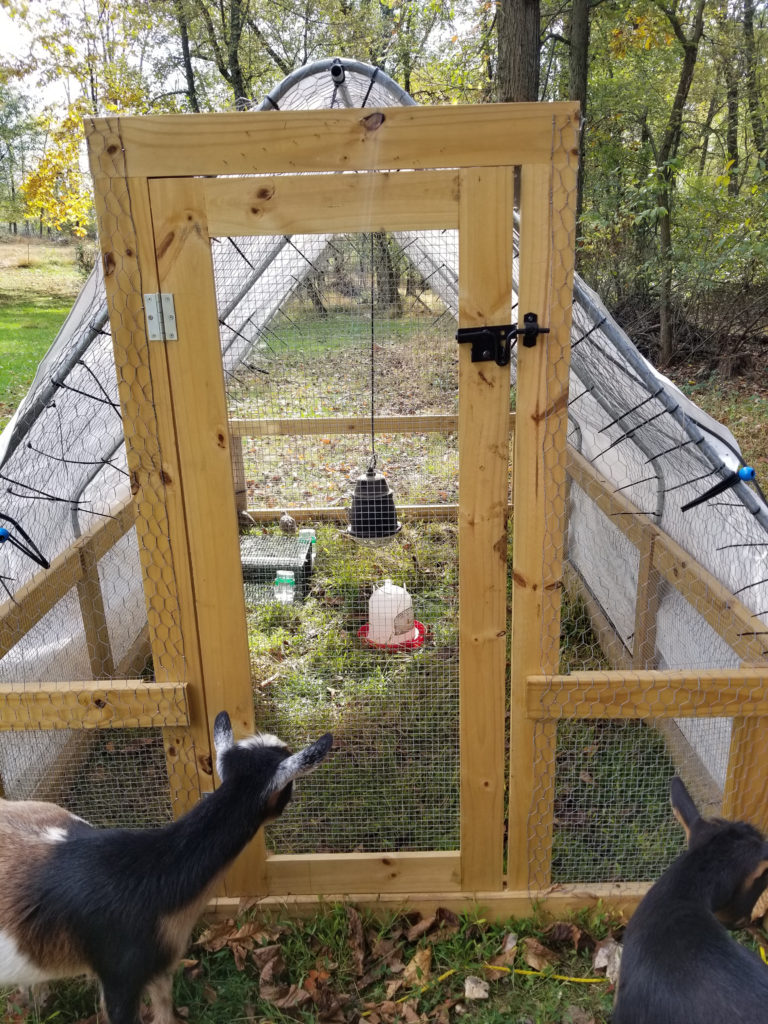Amy Fewell helps you set up the right kind of habitat for your quail.
The number of homesteaders keeping domestic quail is growing by leaps and bounds. Quail are an incredible meat and egg source, especially if you live on a small property. Some people even keep quail in apartments and on balconies––they’re truly that easy to tend to!
One of the most important things when it comes to keeping quail, however, is their habitat. If a quail’s habitat is not to a certain standard, it can be detrimental to your quail-raising projects. But don’t worry, there are options for you when considering which habitat might work best for your property.

A Few Quail Habitat Basics
There are a few basics you need to know before getting started on your quail habitat.
As a general rule of thumb, your quail housing either needs to be fairly short or extremely tall. As an example, if you’re keeping quail in cages or hutches, the maximum height of your habitat should be about 12 inches, though some people like to go up to 18 inches. If you’re creating a walk-in pasture raising type system, the habitat should be at least your height and then some (about 6 feet tall or higher). The reason for these heights is that quail have a natural instinct to shoot into the air like mini rockets whenever they’re startled or afraid. If the ceiling is too high, or not high enough, they will soar themselves right into the ceiling and break their necks.
The next basic is an easy fix––make sure your quail have ground cover. Yes, even if your quail are in a cage or hutch. Keep in mind that quail are ground birds in their natural habitat, and quail are still very much wild in character, not domesticated. Add tree branches, rocks, and other things that they can hide behind, under, and near. This makes them feel much safer in their environment.
As with any animal, make sure your quail have access to plenty of feed and water throughout the day. You should also ensure that they have a dust bathing area in their habitat. They are birds, after all!
Make sure you have a ratio of 3 to 5 females per male. The cocks will fight, so keep that in mind when you’re setting up your habitat and putting together your breeding pens.
And finally, make sure your structure is completely enclosed with wire or another type of sturdy material. If a squirrel, mouse, rat, or other rodent can get into the hutch, they will most certainly wreak havoc on it and the quail within your structure. We know this firsthand, and it is an incredibly disappointing thing to discover.
3 Types of Quail Habitats
Now that we’ve talked about the basics, I want to share with you my three favorite types of quail habitats. Believe it or not, there is a wide range of options for the modern quail keeper. In days of old, quail were kept in small cages, as they can be today. But with regenerative agriculture growing in popularity, quail can even be kept in pasture quail tractors as well, much like pastured poultry!
Whatever habitat method you may choose, keep in mind that quail are extremely fragile creatures that require routine checks no matter the habitat. Your habitat should be completely predator proof, no holes where predators can get in (even tiny ones). Wire flooring is always best, because it allows them to excrete feces onto the ground and not walk around in them. And a dust bathing area is always a necessity.
Quail Cages
Oftentimes you’ll see quail in small cages, which are probably the most common quail habitat. You can generally fit five to ten quail in one quail cage, depending on the size. The most common size is 15 inches high by 18 inches wide, with a slanted floor so that the eggs can roll to the front egg tray that sits outside of the cage. While this caging system seems small, the truth about quail is that they enjoy living in smaller spaces, as it makes them feel more safe and comfortable. Also, the more quail there are in a confined space, the less they’ll pick on each other. It’s the complete opposite of chickens.

Quail in cage. Photo courtesy of Kelly Bohling.
For commercial growers and people living in tight spaces, these quail cages are your best option. Oftentimes the cages allow feces to fall into a dropping tray below the cage, letting the quail remain clean at all times. The one bad thing about quail is that they poop a lot, and their poop definitely stinks!
Many quail keepers will add a feeder on the outside of the cages so that the quail can’t make much of a mess in the feeder. This is the best way to help save on feed, as quail can be quite messy feeders.
You can build your own quail cages out of wire, or you can purchase plastic ones online.
Quail Hutches
Most often used on our homestead, rabbit hutches are a great option to house quail. Many times, homesteaders already have rabbit hutches on hand when they get their quail. This was our case when we began our quail journey. While the hutches needed to be modified a bit, we have been fairly pleased with the hutch type set-up. It gives your quail a much larger area to run around in, while allowing droppings to fall to the ground through the wire flooring. You can see one of our makeshift quail hutch set-ups in this video.

Again, as a general rule, we have always added branches and patches of straw or brush for our quail to make a home in. Making your habitat as natural as possible will allow your quail to feel comfortable and flourish in laying eggs and growing!
Pastured Quail
Pastured quail is a fairly new concept. In the past, people have said it’s not possible. But I’m here to tell you, it is absolutely possible. While it may not be as easy to maneuver a pasture pen with quail in it than with chickens, it’s not an impossibility.

Quail in tractor on grass. Photo by Courtney Archer.
Consider this setup with the John Suscovich chicken tractor. While this tractor is most often used for chickens, it can also be used for quail. Notice how the height is perfect for you to walk in, as well as for when the quail flush into the air. It also allows your quail to forage naturally. Just keep in mind that they may still need some ground cover in a corner to make them feel a bit more safe.
You can also use the Joel Salatin chicken tractor method. You would simply modify the height of the tractor to only 15 to 18 inches tall, rather than the height of the regular pastured poultry tractor.
The only con to using a tractor type habitat is that if you are raising the coop to move it (rather than moving it flat to the ground) the quail can very easily escape. Consider making a divider in the coop for your quail. When it comes time to move them, push the quail up towards the front of the coop.
Should you decide not to use a chicken tractor, you can by all means place quail into a run with wired sides and a top. But your pasture quality may diminish if the run isn’t movable. You can also run into more maintenance with this method as well.
Quail Habitat Troubleshooting
If at any time you should find your quail fighting or picking on one another, it could mean that they have more space than necessary. It could also mean that there are too many cocks to hens. In addition, hens will often pick on just one cock in a coop. If this is happening with your quail, consider adding more quail, or taking away space. You can also try adding more ground cover for quail to hide in and feel safe from the others. Just make sure that the cover is convenient for the quail to hide in, but also convenient enough for you to gather eggs from.
If you find quail dead in your coop, it is more than likely a height issue, a fighting issue, or a predator issue. Even the smallest of holes should be covered up. We have lost many quail to squirrels that get into the coops and try to eat the quail feed. The squirrels aren’t purposefully trying to kill the quail, but because quail are so fragile, any swift blow can kill them.
More than anything during your quail keeping journey, be prepared to switch things up if necessary. Just because one strategy works on someone else’s property, doesn’t mean it will work on yours. Start with your preference, and then tailor your needs from there! It’s all about learning and growing!
Amy Fewell is an author, homesteader, and the founder of the Homesteaders of America. She is the author of The Homesteader’s Herbal Companion and The Homesteader’s Natural Chicken Keeping Handbook. She lives in the foothills of the Blue Ridge Mountains in Virginia, where her and her family holistically and naturally raise their livestock, gardens, and mini-homesteaders! You can follow her doings at The Fewell Homestead.













2 Comments
Why do quail cages have sloped egg floors? I don’t understand that.
What is a quail corner? Can’t find it anywhere.
Thank you,
Brenda
Santa Maria, CA